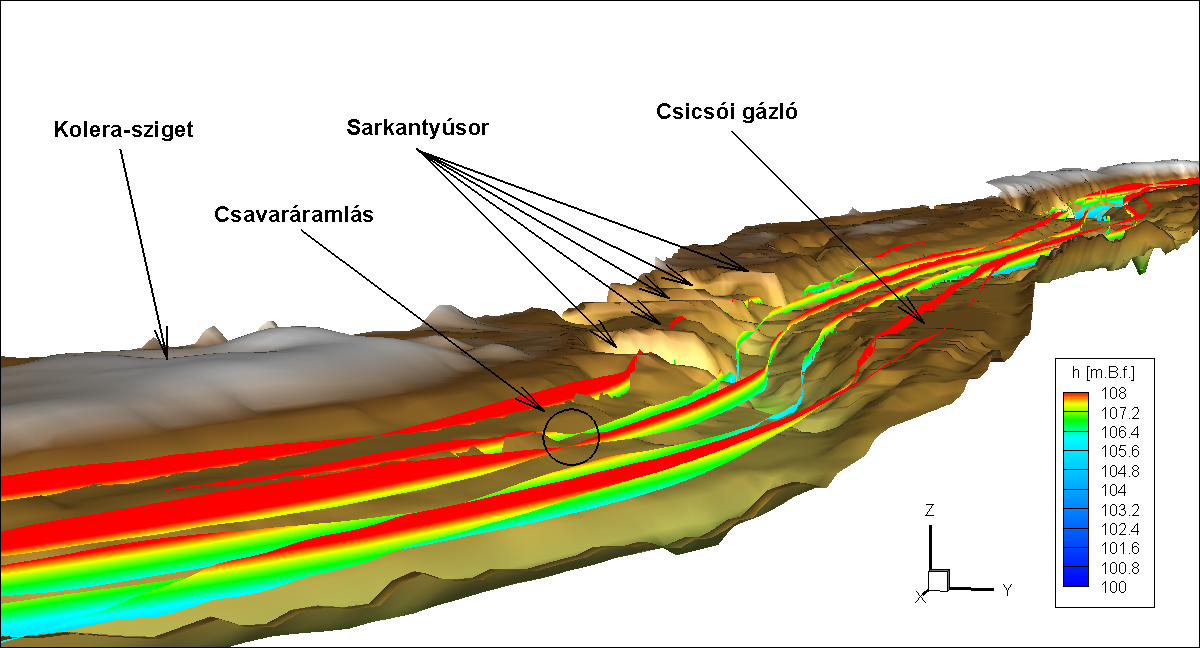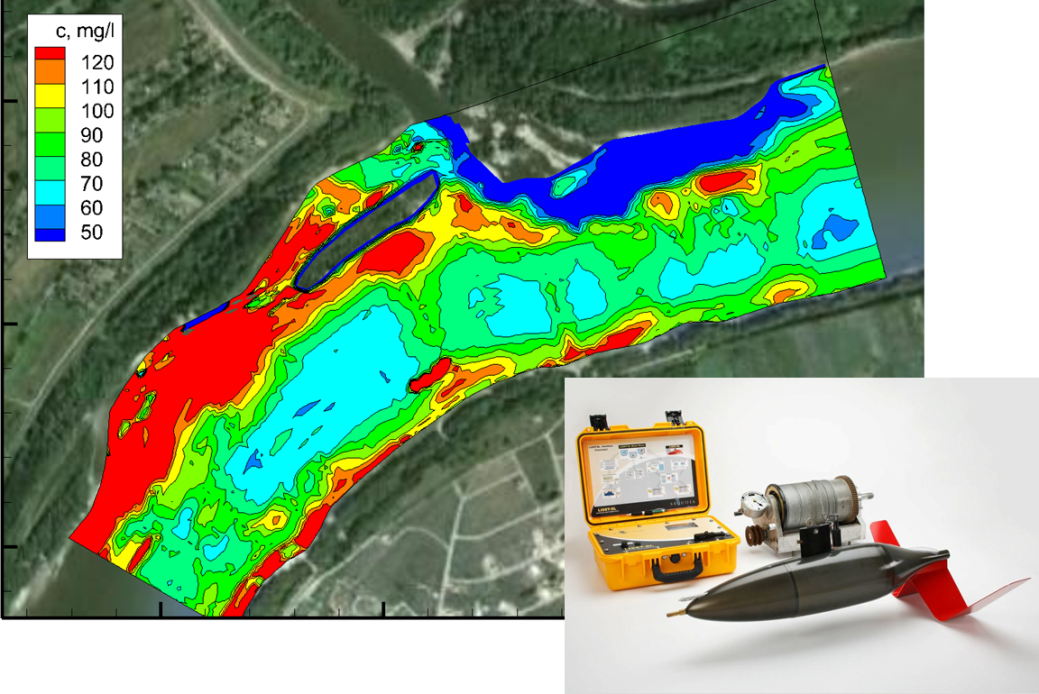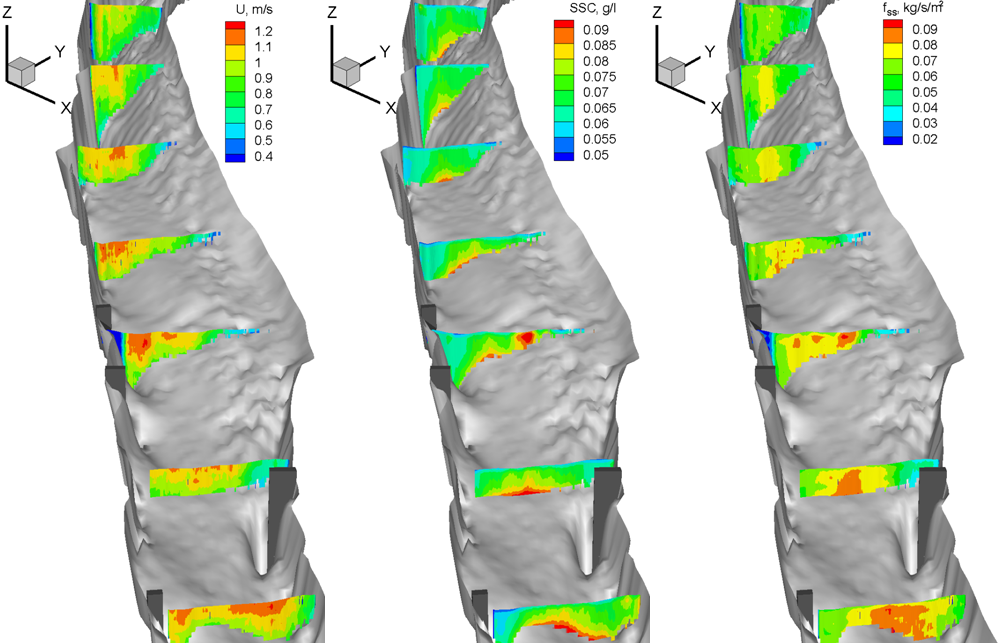River hydromorphology
One of the main research topics of the department is the analysis of flow, sediment transport and morphodynamics of rivers. These investigations play a relevant role in several fields of river related activities such as flood risk, navigation, riverine habitat, drinking water supply, hydropower production or recreation having a direct impact on society, economics and environment. Our research is built on two pillars: field investigations and computational modelling.
As to the field measurements we use and develop up-to-date techniques. For flow analysis studies primarily acoustic methods are used (ADCP, ADV, Aquadopp). Using these techniques high spatio-temporal resolution of flow discharge, water depth, velocity field, bed shear, mixing parameters or even information on ship generated waves can be obtained. Furthermore, image based techniques (PIV, PTV, LSPIV) are also used e.g. for the determination of stream discharge in an indirect manner. For sediment transport measurements direct (i.e. physical sampling) and indirect methods (optical, acoustic, laser based, image based) are applied and developed. The goal of these investigations is to improve the estimation of the spatial and temporal variability of sediment load in rivers compared to conventional methods.
Besides field studies we apply and develop computational models to study river flow, sediment transport and morphodynamics. For this purpose 1D, 2D and 3D hydrodynamic models are used coupled with sediment transport modules, providing suitable tools for the simulation of morphological changes of rivers. Parameterization, calibration and validation of the models are performed based on high quality field data. The numerical modeling studies are focused on the following issues: study the impact of floods on river bed geometry; support the planning of river engineering measures; simulation of local scouring around hydraulic structures, study of habitat suitability, analysis of mixing processes in rivers, large scale simulation of river formation.
3D hydrodynamic analysis of regulated rivers (Danube)

Modeling of waves induced by a passing barge (Danube)
Modeling breaking waves induced by ships
Measurement of breaking wave veiocities using LSPIV
Distribution of suspended sediment concentration at a river confluence (Danube-Hron)

Flow velocities, suspended sediment concentration and sediment load estimated from ADCP measurements

3D modeling of mixing at river confluences (Mosoni-Duna and Rába rivers, Győr)
3D modeling of local scouring at bridge pillars
3D modeling of morphological changes (Danube)
